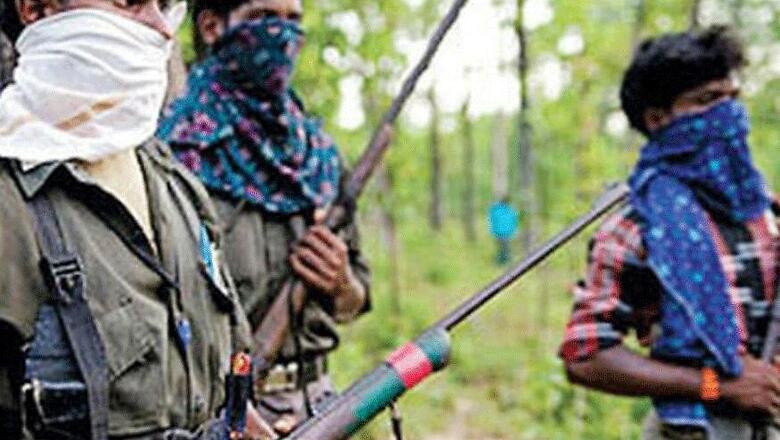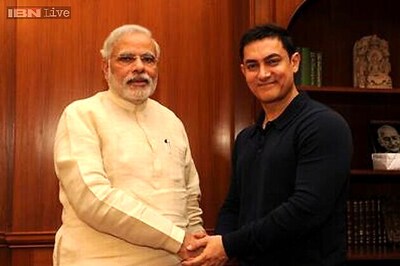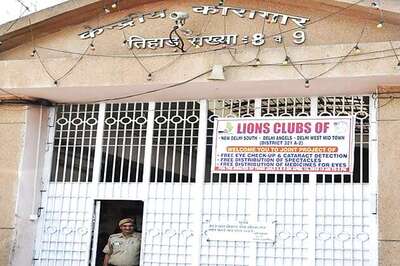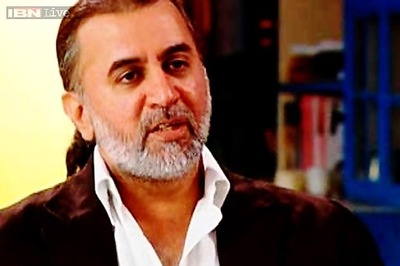OPINION | Nation Should Emerge Winner in its Fight Against Covid-19 and the Bigger Threat of Maoists

views
On a day when the length and breadth of India observed ‘Janata Curfew’ and banged utensils on an appeal from Prime Minister Narendra Modi to express solidarity with frontline workers for their fight against the coronavirus, a deafening explosion in Bastar, Chhattisgarh, took away from several lives.
As many as 17 jawans of the Central Reserve Police Force (CRPF) were killed and at least 14 were injured in the dastardly attack by Maoists.
The ultras were trying to convey a message that for them hate will always assume priority over national interest or any peace-building measure – or a united fight against the coronavirus.
While world is now advocating social distancing to prevent the spread of COVID-19, Maoists have for long been practising a distancing of a different kind – staying away from human values of compassion and tolerance.
For a while it seemed the intensity of attacks by Maoists was beginning to reduce after Modi came to power, the Bastar attack proved otherwise. To understand it better, it becomes imperative to delve into the genesis of the Maoist violence in India.
For ages, India has been facing the onslaught of structural violence. The Maoists, however, came into prominence in 2004 following the attacks on security forces and the formation of the CPI-Maoists (CPI-M) – a rebel group comprising the MCC (Maoist Communist Centre) and the People’s War Group.
However, their origin isn’t recent and can be traced to the time of a split in the Communist Party of India (Marxist) split in 1967, leading to the creation of the Communist Party of India (Marxist-Leninist).
While Maoists don’t believe in any religion or caste, they are devoted to the sole mission of destroying India at any cost. For this, they are willing to join anti-national forces at any cost. Killing jawans and taking away their weapons form a part of their modus-operandi.
In January 2005, talks between the CPI-Maoists and the Andhra Pradesh government broke down. The rebels accused the authorities of not addressing their demands of releasing prisoners, a written truce and redistribution of land.
For a long while, India has been a fertile land for the growth of the ultra-communist movement and for sub-nationalism to thrive. Not many are aware that linguistic fanaticism too has had a role to play in the spread of the Maoist movement in the country.
Initially, the Communist leaders wanted to follow the Soviet Union model in India, but given the selfish motives of a few, it was opposed. This further gave rise to the anti-national movement.
Interestingly, the Left-leaning Communists have often been confused with the class-based struggle and the parliamentary form of democracy of India.
After all what has prevented them from adapting the Marxist-Leninist ideology to the Indian context or setting up an Indianised version of the same?
Even though the father of the Communist movement in India Satyavrat wanted that the character of communism should be in line with the ecology and ethos of India, his view was brutally repressed.
Satyavrat had convened a meeting of Communists in Kanpur in 1925. His views of a Communist movement didn’t find traction with many of the attendees and were sidelined.
It is a pity that Satyavrat doesn’t find mention in any of the Leftist literature of Communists in India. Earlier, the Communist movement in India was inspired by the erstwhile USSR and used to receive directions from Moscow.
However, one section of Communists found the use of violence in effecting a regime change as legitimate. Such a section exists even today and receives funding plus directions from China to orchestrate violence in India.
The sole mission of such Maoists is to bleed India through violence, destroy its democratic institutions and establish a regime inspired by China’s Mao movement in its place.
In order to effect such a change, they follow Mao’s two popular theories. First, to work towards bringing about a change in the political regime followed by waging an ideological political battle. In order to achieve their objectives, the ultras are not afraid to have blood on their hands.
This is amply visible in the killing of Right-leaning workers in states like West Bengal and Kerala. While a lot of hue and cry is made over several issues by so-called liberals, but no voice is heard against the brutal ideological killings.
At work is the Left-leaning Maoist ideology which doesn’t even blink an eyelid in eliminating those opposed to them.
Now, let no mistake be made to assume that Maoists are active only in the jungles. They have subtly spread their ideology across premier educational institutes, political parties, film/television fraternity, authors, columnists and across leading media houses.
Many of those following the Leftist ideology take pride in belonging to the ‘tukde-tukde’ gang (wanting the country to be divided into pieces), celebrate Pakistan’s victory, oppose the arrests of their sympathisers, advocate for a referendum on Kashmir while shedding tears on the death of terrorists like Afzal Guru and Yakub Memon.
The students and teachers at such institutions are so radicalised in pursuing an anti-national narrative, it is no surprise that the Maoist ideology has fiercely engulfed the fabric of this nation.
The critically acclaimed film ‘Buddha in a Traffic Jam’ starring Anupam Kher poignantly narrated the tale of intellectual terrorism -- involving inter-meddling of academia with Maoism and corruption.
Truly, we should consider ourselves fortunate that we live in a pluralistic country like India where the media, unlike in China, enjoys freedom, and workers have right to form trade Unions to put across their demands.
However, we should steer clear of blindly following the Chinese and Russian models of Communism. They had staunchly opposed the theory of Communist Joseph Stalin, who was more in favour of giving priority to the development of a country, than blindly subverting national interests to the Marxist ideology.
The Communist party disintegrated in 1964. The India-China border dispute too had a role to play behind the same.
In April 2006, former Prime Minister Manmohan Singh had expressed deep concern over the rise of Maoists and termed it as the “single-biggest threat to internal security.”
He even proceeded to allot a special budget for providing combat assistance in areas dominated by Maoists. However, his proposal was described as an overkill and unethical by the intelligentsia and media.
Sadly, his cabinet’s proposal didn’t find much takers even within his own party. Even the Indian Army publicly expressed its reluctance in getting involved in such an operation.
All this despite the Southern Command of the Indian Army raising an alarm in 2004 against the spread of Maoist activities in the country and even suggesting that the government take the Army’s assistance before it was too late.
Since time immemorial, it has been seen that whenever a ruling dispensation has bowed to the demand for the formation of a state or a country based on religious or linguistic considerations, the results have been devastating.
Such regions often emerge as a fertile ground for religious conversion and Maoist activities. Whenever a region in India tries to sway away from the tenets of nationalism, it often gets disconnected from the shared values and heritage our country has been known for.
The void such disintegration leaves often emerges as a breeding ground for anti-national activities.
Moreover, this identity-based affiliation of ours, gave ample space to forces which believed in conversion, monotheism and expansion by using violence, thus, striking at the very root of our culture which is steeped in diversity.
In most cases, the change in demography is the most likely trigger for structural violence.
Apart from colonial impact, our love for sectarian identities gave ample space to demographical changes which had far reaching impact.
More than our eternal identity as Indians, the cultural linguistic affinity and regional affiliation got embedded in our minds and this got roots when the linguistic re-organisation of the states was undertaken after independence. This paved way and provided space to all kind of ‘ism’s’ to prevail.
The linguistic identity issue became even more evident when late Potti Sreeramulu undertook an indefinite fast for the cause of a separate Telugu-speaking state.
Unfortunately, his death in December 1952, after sixty days of fasting paved the way for the creation of the Andhra state, in 1953.
Likewise, there were a series of demands for separate statehood in different regions. Master Tara Singh who was already demanding the creation of a Punjabi-speaking state culminated in the formation of Punjab in 1966. This demographic divide planted a deep spike which led to violence in Punjab much later.
Then there was CN Annadorai's demand for a Dravida Nadu for the Tamil-speaking polity. This linguistic affinity of the regional leadership created an emotional disconnect between the people of the different regions and states.
Further, the denizens of the states which were reorganised on the basis of linguistic and cultural similarities gradually moved away from umbrella of the national identity to take refuge in their regional identities.
Thus, turning into distinct entities indifferent to the causes they espouse. This explains the tensions when issues like water-sharing, pollution, ethnic identity, migration, language are discussed.
Wherever, the sectarian identities have dominated mind-sets, the majority populace has receded into the background, creating a demographic vacuum.
The then Prime Minister Jawaharlal Nehru institutionalised this by forming the State Reorganization Commission in 1953 which recommended reorganisation of states on the basis of language.
How one wishes that Nehru had heeded to the advice of Dr Rajendra Prasad and Sardar Vallabhbhai Patel, who had warned against damage of creating linguistic-based states and how the ideology of alienation could wreck in coming times.
Largely, Communism in India has nothing to do with ideology or principles. It is like a virus, much deadlier than COVID-19, and changes its character and intensity (of violence) with time.
While India has faced several challenges since Independence, it is yet to face a pandemic as severe as Covid-19. Similarly, whenever the Communists have come forth vehemently by forming several groups, they have often emerged as terrorists.
Our country has been facing the onslaught of the virus of isolation and terrorism since decades. India’s geography and states driven by linguistic considerations have also taken a beating – be it West Bengal, the southern states or Punjab.
While such elements did try to pursue their hate-driven agenda in the Hindi-heartland states, they couldn’t succeed much. The Hindi states are deeply glued to the tenets of nationalism, and never formed language-based sects or groups.
The changes in the demography of India, has led to a plethora of problems for society and the nation as of today. Evaluating these repercussions of demographic changes can lead us to the instances of structural violence breaking out sporadically across the country.
I wholeheartedly pray that the country is able to ward off the current challenge posed by not only Coronavirus, but by other viruses such as sectarianism and Maoism.




















Comments
0 comment